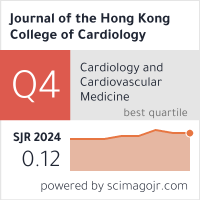Abstract
Background: Pulmonary vein isolation (PVI) remains the cornerstone of rhythm control for atrial fibrillation (AF), with cryoballoon ablation (CBA) representing the established single-shot technology. Pulsed field ablation (PFA) offers a novel non-thermal approach utilizing electroporation, potentially enhancing myocardial selectivity while minimizing extra-cardiac injury. This study compares the procedural efficacy and safety of PFA and CBA.
Methods: This retrospective cohort study analysed 153 consecutive patients undergoing first-time PVI (CBA = 113; PFA = 40) for AF at a single tertiary centre. Primary efficacy endpoint was arrhythmia-free survival one year post-ablation, while the secondary efficacy endpoint was the improvement of symptoms, quantified by European Heart Rhythm Association (EHRA) and New York Heart Association (NYHA) classification systems. Procedural parameters and safety outcomes were also evaluated.
Results:At 12 months, arrhythmia-free survival was comparable between the two groups (PFA 84.4%, CBA 70.8%, log-rank p=0.132). Both groups demonstrated significant functional improvement, with reductions in NYHA class and EHRA scores (p
Conclusion: PFA achieves comparable treatment efficacy compared to CBA while maintaining an excellent safety profile. Its tissue-selective mechanism may offer advantages in reducing collateral damage, positioning it as a viable alternative for PVI procedures. These findings warrant validation through larger randomized controlled trials.
Recommended Citation
Wan Ying Kwok, Pulsed Field Ablation Versus Cryoballoon Ablation for Pulmonary Vein Isolation in Atrial Fibrillation: A Single-Centre Experience Journal of the Hong Kong College of Cardiology 2025;32(6) https://doi.org/10.55503/2790-6744.1566
Creative Commons License

This work is licensed under a Creative Commons Attribution-Noncommercial-No Derivative Works 4.0 License.



